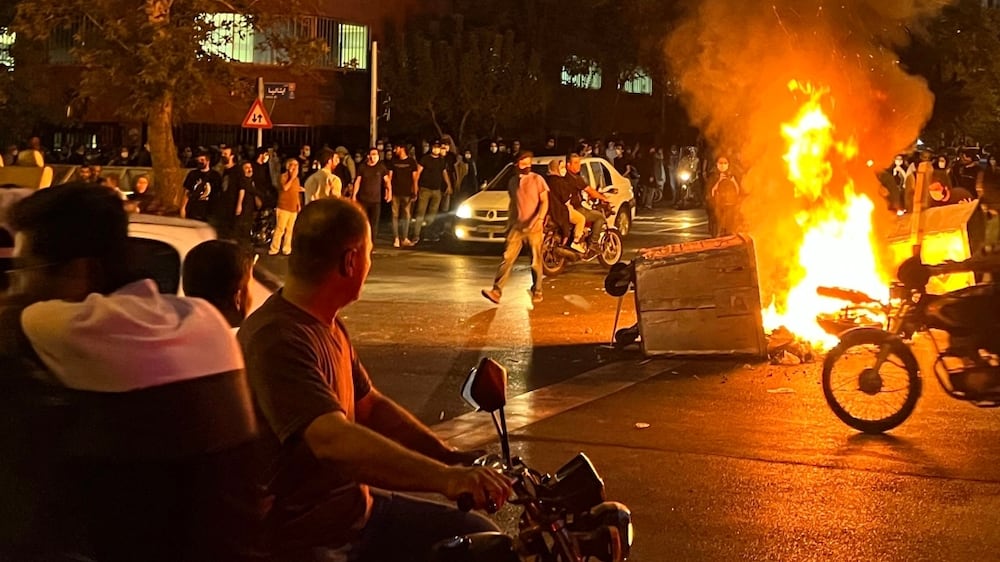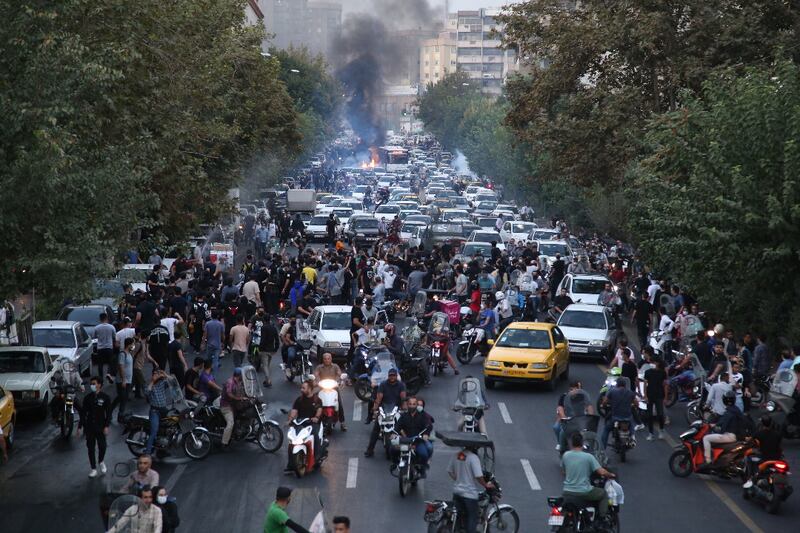Protesters in Iran set fire to police stations and vehicles across the country on Thursday as the death toll from unrest triggered by the death of a young woman detained by security forces rose to 31.
It also led the country's Islamic Revolutionary Guard Corps (IRGC) to call on the judiciary to prosecute “those who spread false news and rumours” over the incident.
The protests, led mostly by women, erupted in more than a dozen cities and at universities in Tehran following the death on Friday of Mahsa Amini, 22, who had been arrested three days earlier for allegedly breaking Iran’s strict hijab law.
Amini, who was from Iran's western Kurdistan province, fell into a coma after being arrested by morality police in Tehran.
“We have requested the judiciary to identify those who spread false news and rumours on social media as well as on the street and who endanger the psychological safety of society and to deal with them decisively,” said the IRGC, which has cracked down on protests in the past.
For nearly a week, some protesters have been chanting “death to the dictator” and burning their headscarves.
In a video taken in the country's north-east and posted on social media, protesters shouted “we will die, we will die but we'll get Iran back” near a police station that was set on fire.
The video, posted on the Twitter account @1500tasvir, was reported by Reuters but could not be verified. The account focuses on Iran protests and has about 100,000 followers.
In Tehran, another police station was set on fire as the unrest spread from Amini's home province.
Explainer: what sparked Iran's new wave of protests?

Access to Instagram and WhatsApp were blocked and the public faced drastic restrictions on internet access on Thursday.
“In accordance with a decision by officials, it has no longer been possible to access Instagram in Iran since yesterday [Wednesday] evening and access to WhatsApp is also disrupted,” the semi-official Fars news agency reported.
The two apps were the most widely used in Iran after the blocking of other platforms in recent years, including Facebook, Twitter, Telegram, YouTube and TikTok.
“People in Iran are being cut off from online apps and services,” Instagram chief Adam Mosseri wrote on Twitter.
“Iranians use apps like Instagram to stay close to their loved ones, access timely and important information and stay connected to the rest of the world,” Mr Mosseri said.
“We hope their right to be online will be reinstated quickly,” he said.
Demonstrations have been held in at least 13 cities in the country, as protesters took their anger over social repression to the streets.
Videos online show security forces firing tear gas and water cannons to disperse protesters.
Amnesty International reported that officers fired birdshot and beat protesters with batons.
Iranian officials said Amini died on Friday from a heart attack after three days in an intensive care unit following her arrest last Tuesday.
But her family said she had no known health problems and that she had suffered bruises to her legs.
The unrest over Amini's death, although widespread, appears distinct from earlier bouts of nationwide protests triggered by financial issues as Iran’s economy staggers under US sanctions.
Unrest erupted in 2019 over the government’s abrupt petrol price increase and hundreds were killed as security forces cracked down in the deadliest violence since the 1979 revolution, according to human rights groups.







